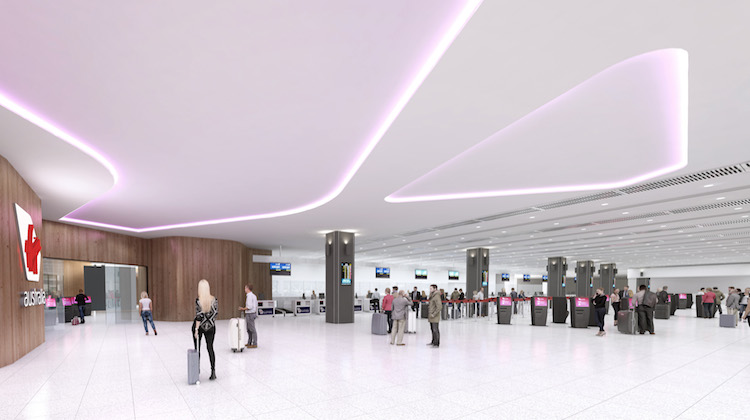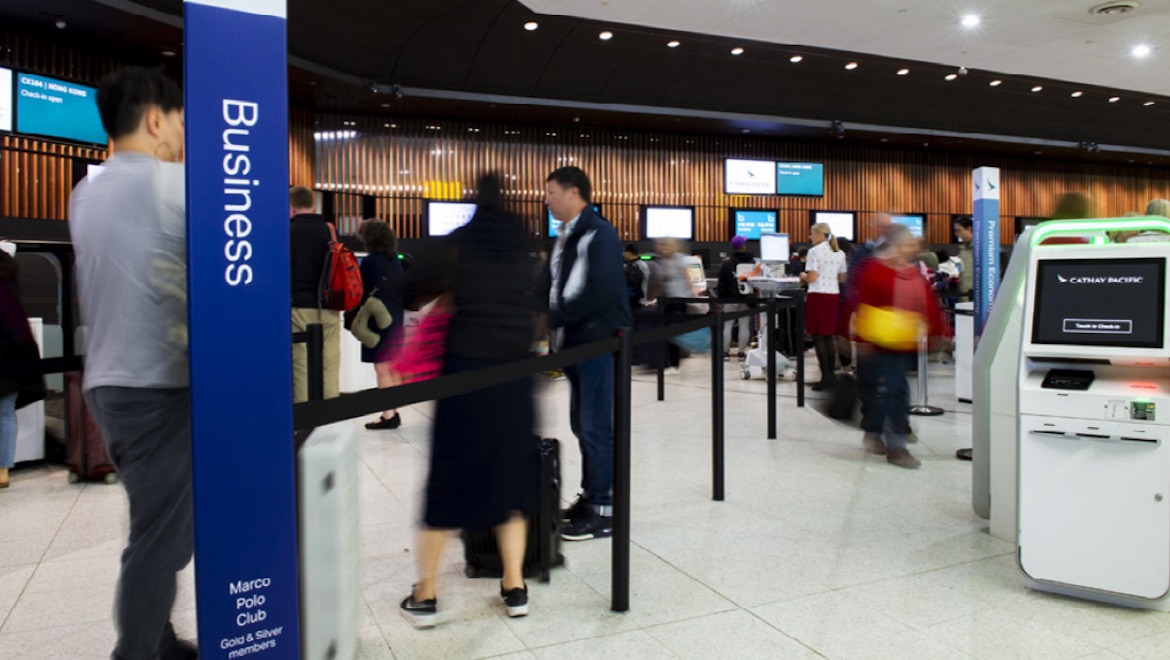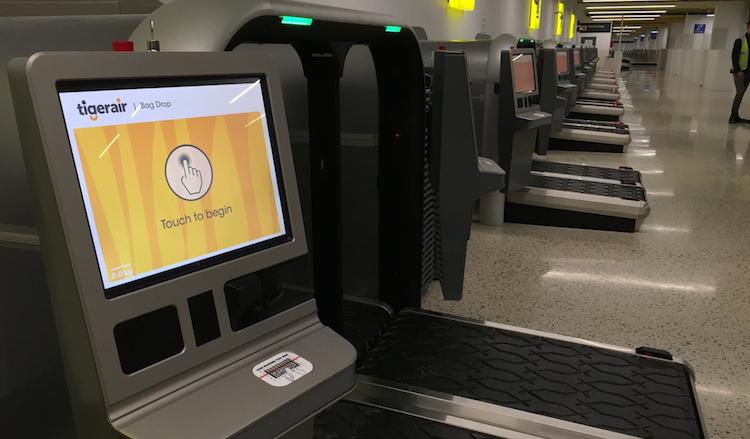
Melbourne Airport plans to roll out new checkin and baggage drop kiosks throughout its terminals as part of a contract extension with air travel technology provider SITA.
The hybrid check-in areas would offer airlines the flexibility of having a mix of self-service and assisted kiosks that can be configured depending on the time on the time of day and type of passenger travelling.
The concept is similar to what has been on offer at Melbourne Airport’s international terminal, which also used SITA technology.
“Those technologies will increasingly be rolled out across other terminals, expected to culminate in more than 400 passenger touchpoints including mobile and standard check-in desks, gate boarding, self-service check-in kiosks, hybrid and standard self-bag drops,” SITA said in a statement on June 4.
Melbourne Airport chief information officer Luke Halliday said the flexible hybrid solution would allow the airport to boost capacity and ensure customer expectations were met.
“Technology plays an increasingly important role in the operation of an airport, particularly as we strive to streamline the passenger journey through the airports and make the processing experience as unobtrusive as possible,” Halliday said.
Plans to install new facilities across its four terminals followed Qantas announcing in May it had sold its domestic terminal, known a Terminal 1, to Melbourne Airport for $355 million.
Further, Melbourne Airport and Virgin Australia unveiled a three-year plan in December 2017 to significantly upgrade Terminal 3, where the airline operates its domestic flights out of.
And going further back, Tullamarine opened Terminal 4 in August 2015, with Tigerair Australia the first airline to operate out of the facility that featured automated checkin kiosks and bag drop facilities.

The Melbourne Airport 2018 master plan forecast 67 million passengers a year would pass through its terminals by 2037, compared with 38 million in 2018.
The master plan also includes planning for a third runway, with Melbourne Airport currently preparing a major development plan for submission to the federal government for approval.
SITA president for Asia Pacific Sumesh Patel said the forecast growth in passenger numbers in the years ahead represented a capacity challenge for airports.
“If passenger numbers are going to double, it doesn’t mean the airports are going to double,” Patel said on the sidelines of the International Air Transport Association (IATA) annual general meeting in Seoul on June 3.
“How do they manage this? Obviously the reliance on technology is really going to grow.”

On the Melbourne Airport, Patel said SITA’s based on SITA’s AirportConnect Open platform, would give those travelling on both domestic and international flights the same passenger experience.
Further, it would future proof the airport as new technologies were brought online in the period ahead.
For example, the system SITA was implementing would integrate with future biometrics.
“Because once you make an investment, you want to make sure that it integrates with what your future airport will look like,” Patel said.
“If you put in common use infrastructure, which is the checkin kiosk, your bag drop, and then you say you want to do biometrics, now I can’t integrate, I need to maybe change what I have put in, that that becomes a bit of a challenge.
“If today I have got a thumb scanner and tomorrow I want to do facial recognition, if my infrastructure does not support mounting a camera or getting the camera data read then I have a challenge.
“I’ve made such a huge investment at the airport, now how do I do it. I can’t change 100 kiosks, which is going to cost millions. That’s what we mean by future proofing.
“We work with the airport to see what their vision is in terms of what they want to do.”

More broadly, Patel said SITA had technology solutions in place at airports to minimise disruption to operations when flights were delayed by giving staff on the ground more notice to anticipate when an aircraft might be late.
Also, the use of smart technology, automation and new processes had allowed airlines and airports to track passengers’ luggage at check-in, when loaded onto the aircraft, at the transfer point for connecting itineraries and at arrival, which helped reduce the number of mishandled bags.
IATA Resolution 753, which required member airlines to track baggage at four stages of the journey – checkin, loading onto the aircraft, transfer and arrival – came into effect in June 2018.
“That’s what has helped the industry to improve,” Patel said. “Before IATA 753 it was not an urgent thing.”
And finally, the use of biometrics was growing as more airports, along with national governments, utilised the technology to boost capacity and offer a more seamless passenger experience.
Patel said airports and airlines were planning significant investments in biometrics over the next three years.
“It’s really picking up the pace,” Patel said.
















Red Cee
says:Personally, I don’t like the automatic check in kiosks that have been forced upon the travelling public. I travel a lot, and still prefer the personal touch, and a friendly hello and smile from the check in clerk.
QSS
says:To be honest the international terminal ones look very cheap and staff don’t like using them.
Adrian P
says:At the self service check in how many passengers read the security questions or do the just tick the box.
The other aspect of the traditional check in clerk is they are expected to note passengers with unusual behavior etc.
Freddie
says:Not in favour of these at all. Excess and weighty cabin baggage is a growing and ongoing problem along with security questions etc. People have to learn to allow more time to check in – not just turn up at the appointed time and get straight through.
KATHERINE ARZANOV
says:Automated technologhy is very daunting for senior citizens. You need to show people numerous times how to use it. Having one staff as a concierge can be painfull for both customer and staff. I found Friday was a particular frustrating day due to the number of domestic passengers this day. Also the self baggage check in kept shutting down. How frustrating. Rarely would see this happen with a staff member behind the counter and I always loved that human contact greeting you.
On the positive side if we were all fully trained, patient and leave ourselves extra time, then would it be simple,seemless, clinical and cost effective.